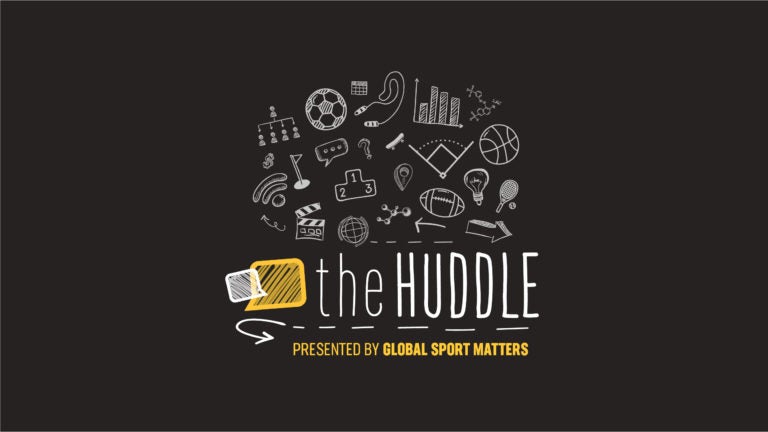GSM Live: Threatcasting the Future of Sport (Video)
Academics, scholars, and researchers have been warning society for years about an inevitable pandemic. Today, every country is being challenged in their ability to effectively react to and mitigate the effects of COVID-19. This disease has impacted all aspects of life including school, work, travel, and sport.
Sport’s accessibility as a form of entertainment and wellness has been limited. However, it continues to serve as a platform for conversations about the causes and solutions for current and future threats.
The speakers of GSM Live: Threatcasting the Future of Sport discuss how global threats have affected sport and how sport may hold the keys to sustainable solutions and social progress.
The panelists include:
Brian David Johnson, Professor of Practice at Arizona State University’s School for the Future of Innovation in Society and a Futurist and Fellow at Frost & Sullivan.
Dr. Deborah Stroman, Adjunct Associate Professor at University of North Carolina’s Department of Health Behavior and Director of Carolina Sport Business Club.
Kelvin Watt, Regional Managing director of Nielsen Sports in Africa and the Middle East.
Dr. Kenneth Shropshire, CEO of the Global Sport Institute and Adidas Distinguished Professor of Global Sport.
Johnson specializes in threatcasting, an interdisciplinary framework that works toward recognizing current threats, predicting future disasters, and forming systematic plans that can help combat these issues. Johnson says that threatcasting is centered around the question of, “How do we disrupt, mitigate, and recover from these threats?” In the context of sport, he says that threatcasting is important to consider in the construction and retrofitting of playing venues. Architects, designers, and business executives need to take into account the implications of climate change and COVID-19. For instance, architects must ensure that the venues are resilient in the face of extreme climate-related events as well as spacious enough for visitors to maintain safe social distancing.
However, threats are not just limited to biological or environmental disasters. Some have been deeply ingrained in society for centuries. The murders of George Floyd, Ahmaud Arbery, Breonna Taylor and so many others have ignited Black Lives Matter protests not only in the United States, but across the world .
Dr. Shropshire says that these movements are essential, but progress towards racial justice cannot continue to be measured by symbolic gestures that lack genuinity. He says, “Think about tearing down statues and Confederate flags. It’s all very important, but that’s the symbolism of the movement. You can do that as a political move, but the hearts and minds need transition.”
Dr. Stroman echoes this statement and says that while quantitative research is important in forming anti-racist policies, data needs to be accompanied with the stories of those who are being oppressed. “A person could be screaming at the top of their lungs, ‘Look at what happened to me!’” she says. “But until you bring in the numbers and show patterns and trends, that’s how we make a difference.” She notes that data can be delivered to policymakers, however, “If they can’t move by looking at the numbers - plus they have the storytelling - then they don’t have a heart. They are holding on to something, this tradition, this status quo, that benefits them that creates advantages for them but they just don’t see the humanity to make this decision.”
Since racism is a such an immense societal threat, it is inevitably carries over into sport. Watt points to the exclusion of Asian and African teams and leadership in the International Olympic Committee. He says, “We’ve never had anything but a white American or a Western European largely leading those organizations through 124 years.” He also mentions the role of racial divisions and white privilege in sport participation in his home country of South Africa. He says, “You often see a lot of sports that are 90 or 95 percent dominated by white kids or white players. Specifically in sports where a level of privilege is required,” he says. “We’ve realized if we don’t normalize what [mulitracial] teams should look like, sport can never be successful.”
The world is not the same as it was last year, last month, last week, or yesterday. As we are being challenged by threats such as pandemics and racism, we need to remain dedicated to being compassionate lifelong learners who have difficult discussions and take necessary action. Sport provides people with the opportunity to increase awareness of threats, collaborate on sustainable solutions, and engage in movements for social progress. Dr. Shropshire stresses the necessity of continuing the conversations and work that are being done right now in response to the injustices that have been exacerbated by current circumstances. According to him, “There can be a bright future if we continue the momentum we’re experiencing right now.”
About GSM Live
Global Sport Matters Live is a conversation series presented by Global Sport Institute at Arizona State University and Global Sport Matters. Diverse thought leaders and experts will come together virtually to give their perspective on the most relevant issues impacting sport. From their corner of the globe, a rotation of guests will discuss what they’re facing locally, take questions and ideas from a virtual audience, and share solutions that improve the world of sport.
Monthly Issue
COVID-19 & Sport
COVID-19 is the rival no one in sport could game plan for. As many live events remain at a standstill and the world keeps adapting, how is sport resetting upon its staggered returns?



